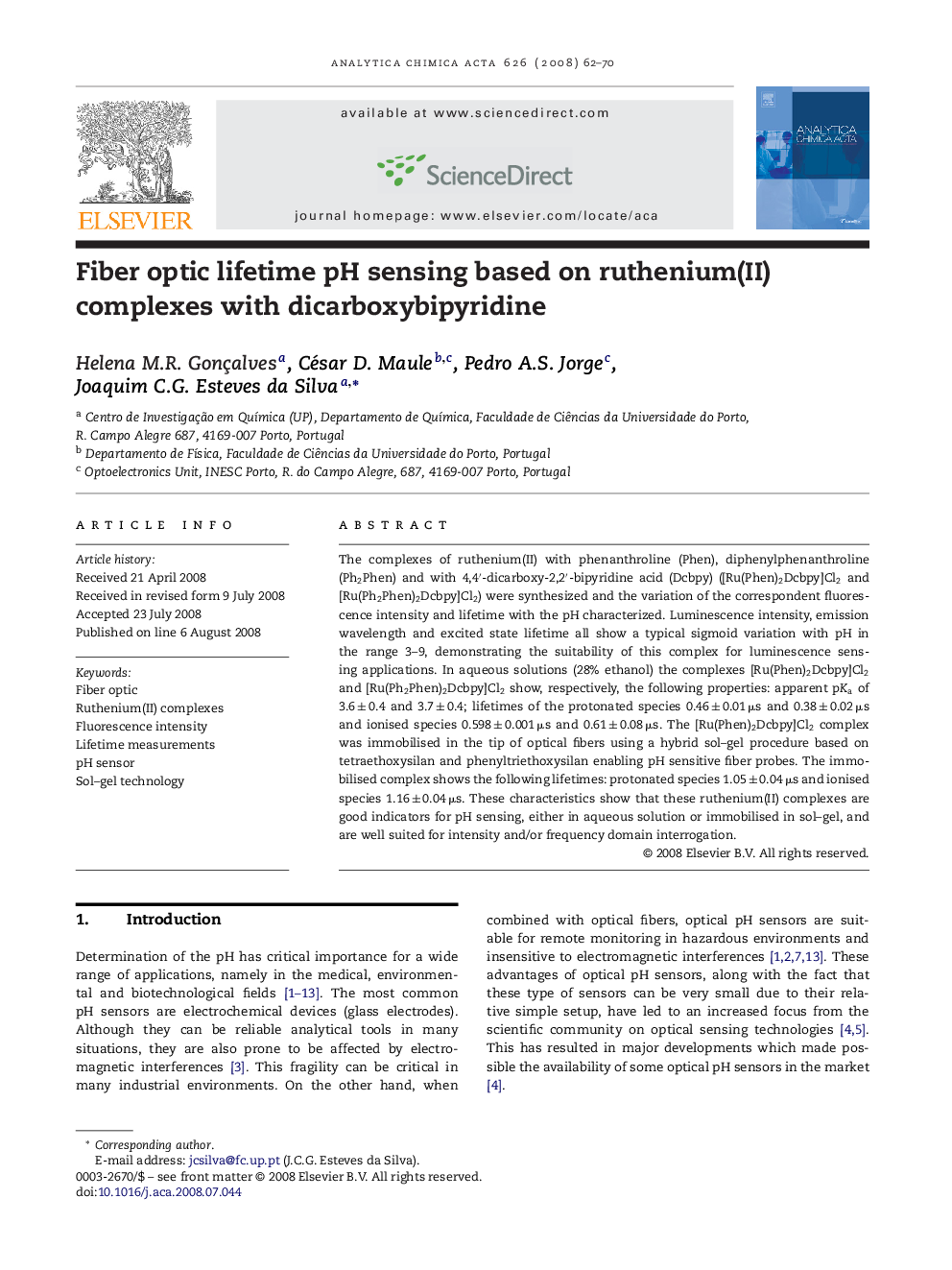| Article ID | Journal | Published Year | Pages | File Type |
|---|---|---|---|---|
| 1169227 | Analytica Chimica Acta | 2008 | 9 Pages |
The complexes of ruthenium(II) with phenanthroline (Phen), diphenylphenanthroline (Ph2Phen) and with 4,4′-dicarboxy-2,2′-bipyridine acid (Dcbpy) ([Ru(Phen)2Dcbpy]Cl2 and [Ru(Ph2Phen)2Dcbpy]Cl2) were synthesized and the variation of the correspondent fluorescence intensity and lifetime with the pH characterized. Luminescence intensity, emission wavelength and excited state lifetime all show a typical sigmoid variation with pH in the range 3–9, demonstrating the suitability of this complex for luminescence sensing applications. In aqueous solutions (28% ethanol) the complexes [Ru(Phen)2Dcbpy]Cl2 and [Ru(Ph2Phen)2Dcbpy]Cl2 show, respectively, the following properties: apparent pKa of 3.6 ± 0.4 and 3.7 ± 0.4; lifetimes of the protonated species 0.46 ± 0.01 μs and 0.38 ± 0.02 μs and ionised species 0.598 ± 0.001 μs and 0.61 ± 0.08 μs. The [Ru(Phen)2Dcbpy]Cl2 complex was immobilised in the tip of optical fibers using a hybrid sol–gel procedure based on tetraethoxysilan and phenyltriethoxysilan enabling pH sensitive fiber probes. The immobilised complex shows the following lifetimes: protonated species 1.05 ± 0.04 μs and ionised species 1.16 ± 0.04 μs. These characteristics show that these ruthenium(II) complexes are good indicators for pH sensing, either in aqueous solution or immobilised in sol–gel, and are well suited for intensity and/or frequency domain interrogation.
